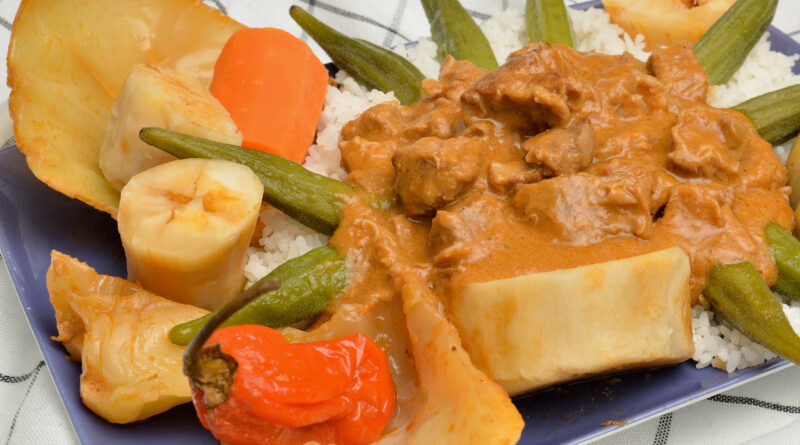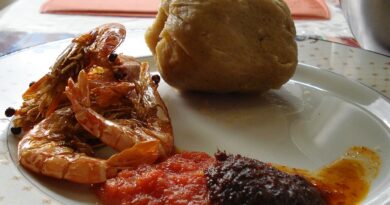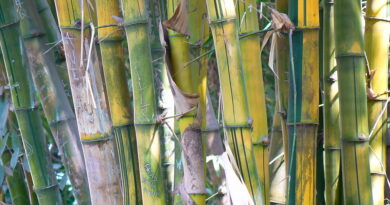Maafe
Exploring the Rich Flavors of Maafe: A Taste of West African Culinary Tradition
Introduction: In the colorful tapestry of world cuisine, there are certain dishes that stand out not only for their taste but also for the stories they carry, the traditions they represent, and the cultural heritage they preserve. One such culinary gem is Maafe, a hearty and aromatic dish originating from West Africa. Maafe, also known as Groundnut Stew or Peanut Soup, holds a special place in the hearts and palates of many across the globe. Let’s embark on a flavorful journey to uncover the origins, ingredients, preparation, and significance of this delectable West African delight.
Origins and Cultural Significance: Maafe traces its roots to the Mandinka and Bambara people of Mali, who have passed down the recipe through generations. Over time, it has spread across West Africa, becoming a beloved dish in countries like Senegal, Guinea, Ivory Coast, and beyond. This savory stew holds a significant place in West African cuisine, often served during celebrations, family gatherings, and special occasions. It symbolizes community, togetherness, and the rich agricultural heritage of the region, where peanuts are a staple crop.
Ingredients: At the heart of Maafe lies a harmonious blend of flavors, with each ingredient playing a crucial role in creating its distinctive taste profile. The key components typically include:
- Peanuts: Ground or crushed peanuts form the base of the stew, lending it a creamy texture and a nutty flavor.
- Protein: Maafe traditionally features chicken, beef, lamb, or fish as the protein source, adding depth and richness to the dish.
- Vegetables: A colorful array of vegetables such as sweet potatoes, carrots, eggplant, and bell peppers are often incorporated, contributing sweetness, earthiness, and vibrant hues.
- Tomatoes: Fresh or canned tomatoes are used to create the stew’s savory base, along with tomato paste or sauce for added depth of flavor.
- Spices and Herbs: Aromatic spices like ginger, garlic, chili peppers, and African seasoning blends such as thyme, curry powder, and bouillon cubes are essential for seasoning and enhancing the overall taste.
- Broth: Chicken or vegetable broth serves as the liquid component, binding the ingredients together and infusing the stew with savory goodness.
- Thickener: To achieve the desired consistency, a thickening agent such as peanut butter or ground peanuts is often added towards the end of cooking.
Preparation: The preparation of Maafe is a labor of love, requiring patience, attention to detail, and a reverence for tradition. While there are variations in recipes across different regions and households, the general method involves the following steps:
- Preparing the Protein: If using meat, it’s typically browned in a pot with oil until golden brown, then set aside. This step helps to develop flavor and texture.
- Sautéing Aromatics: In the same pot, aromatics like onions, garlic, and ginger are sautéed until fragrant, creating a flavorful base for the stew.
- Adding Tomatoes and Spices: Chopped tomatoes, tomato paste, and spices are added to the pot, allowing the flavors to meld together and the tomatoes to break down.
- Incorporating Vegetables: Once the base has simmered and thickened slightly, the vegetables are added to the pot along with the protein, allowing them to cook and absorb the flavors of the stew.
- Adding Peanut Butter: Towards the end of cooking, peanut butter or ground peanuts are stirred into the stew, adding creaminess and richness. Adjustments to seasoning are made as needed.
- Simmering and Serving: The stew is allowed to simmer gently until the vegetables are tender and the flavors have fully developed. It is then served hot, often accompanied by rice, couscous, or crusty bread for a satisfying meal.
Variations and Regional Influences: As with many traditional dishes, Maafe recipes can vary widely depending on factors such as geographical location, cultural traditions, and personal preferences. In Senegal, for example, Maafe may feature a spicier flavor profile with the addition of Scotch bonnet peppers, while in Mali, it might be milder and sweeter, emphasizing the natural sweetness of the vegetables. Vegetarian or vegan versions of Maafe are also popular, omitting the meat and using vegetable broth or water as the base.
Health Benefits and Nutritional Value: Beyond its tantalizing taste, Maafe offers a range of health benefits, thanks to its nutrient-rich ingredients. Peanuts are a good source of protein, healthy fats, and essential vitamins and minerals such as niacin, folate, and magnesium. The inclusion of vegetables adds fiber, vitamins A and C, and antioxidants to the dish, promoting overall health and well-being. When prepared with lean protein and minimal added fats, Maafe can be part of a balanced diet that supports energy levels, immune function, and heart health.
Conclusion: In a world where culinary traditions are increasingly celebrated and shared, Maafe stands as a shining example of the richness and diversity of West African cuisine. Its tantalizing blend of flavors, vibrant colors, and cultural significance make it a beloved dish that transcends borders and brings people together around the communal table. Whether enjoyed in a bustling market stall in Senegal or prepared with love in a kitchen halfway across the globe, Maafe invites us to savor the flavors of tradition, to appreciate the bounty of the land, and to celebrate the ties that bind us as a global community united by food and fellowship.



